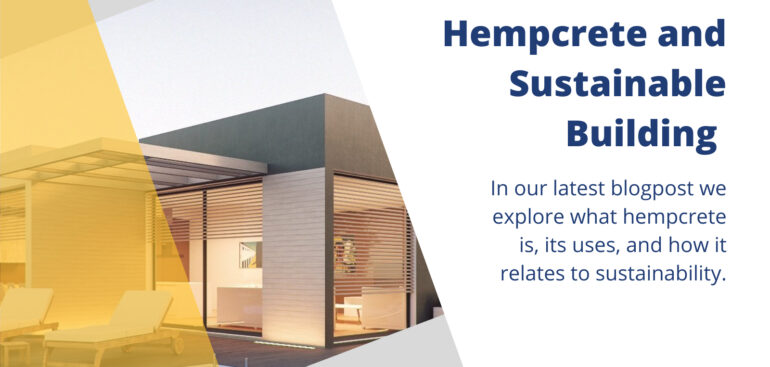Latest
Hemp for Houses
PanXchange Blog
Hemp Concrete or hempcrete results from wet mixing a hemp plant’s shredded stem with a lime mineral-based binder to create a material that can be cast into molds then dried. These molds are commonly used in construction as insulation or some form of concrete. Hempcrete is different than other building materials like standard concrete, plaster, or mortar because of the void space between the mixed hemp strands. The limestone binder acts as an adhesive, setting the fibers permanently but not forming a complete solid.
Depending on the amount of each material, hempcrete can be used for a variety of insulation materials. The hemp industry is already chopping hemp’s stem to source industrial fiber for a variety of products. The unused center of the stem is a harder wood material which is used in hempcrete. Lime has been used as a building material for thousands of years. Like hemp, there is variance in its composition, and there are different brands used for different types of construction. Between that and its natural voids of space, it is a softer material. Unfortunately for the hemp market, it won’t be replacing standard concrete any time soon.
Highly variable and less developed performance parameters make hemp less predictable to work with and harder to comply with local codes. Not to mention, that supply chains are still in their infancy. There is room for technology to bridge this gap, and will likely be in the form of a better binding agent. This hasn’t stopped hemp enthusiasts from making the most of the product so far. Green Building claims, “It makes ecological and financial sense to fill this volume with materials that are annually renewable, low-impact and, ideally, sourced from waste streams or from by-products from other processes.”
Insulation is a growing industry because it lowers the energy costs for buildings. A downside to hempcrete is that insulation may require 12 inches of wall thus reducing a space’s square footage, as reported in Civil Jungle. Although hempcrete does not have the volume price breaks that come with an established industry, hemp’s prices remain competitive! Hempcrete is also quite durable as it maintains its integrity in humid conditions and because of lime’s high PH, which is antimicrobial and antifungal by nature. It also requires fewer herbicides and pesticides than other plant materials causing less environmental damage.
If industrial hemp is going to be part of a building in any capacity, it needs to be fireproof. Unlike France and Canada, hempcrete is a new product for the United States, and reliable fireproof testing has only recently been approved. Hempitecture announced in February of 2020 that Hempcrete completed the ASTM E84 test and scored a perfect 0, meaning it is flameproof and ready to be used in building materials.
Skidmore, Owings & Merril (SOM) reports that the global building sector generates nearly 40% of all global carbon emissions. Studies have predicted that an additional 230 billion square meters of new building stock will be needed by 2060, driven by urban population growth. The PanXchange team asserts that more permanent stores of carbon such as hempcrete will become highly valuable as a sustainable building block for the future. We believe permanent carbon storage will pull ahead in value compared to applications like digestible products such as CBD or hemp seeds, which are more temporary carbon stores. While the industry continues to optimize the material properties of hemp, streamlining manufacturing processes and improving input material sourcing methods need to come first.
Hempcrete likely won’t be found at Home Depot today, but it is on its way. As America moves towards more eco-conscious efforts, it is not unreasonable to expect our building materials to do so as well. As the climate crisis worsens, it is time to start exploring other avenues. Hempcrete is a great start off to a great start for the hemp industry.






